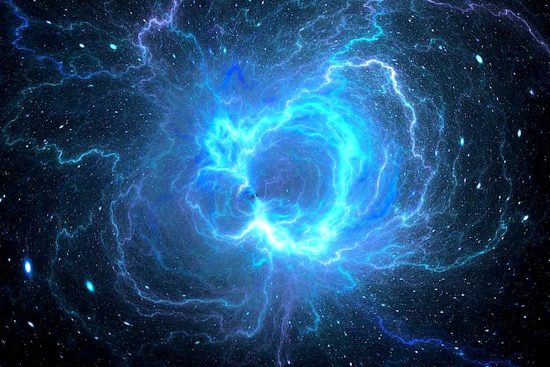
Oct 25, 2019
Summarizing Earth’s electrical connection with the Universe.
“Although we know nothing of what an atom is, yet we cannot resist forming some idea of a small particle, which represents it to the mind … there is an immensity of facts which justify us in believing that the atoms of matter are in some way endowed or associated with electrical powers, to which they owe their most striking qualities, and amongst them their mutual chemical affinity.”
— Michael Faraday
Electric Universe theorists propose that what is observed on other planets, within galaxies, or in free space should be used as examples of what can occur on Earth, as opposed to using our planet to model the Universe. We are part of a cosmic “ecology” that maintains a coherent physical aspect, so that aspect ought to apply here on Earth, as well as in space.
Since Earth is electrically charged, it maintains an electric field at its surface of between 50 and 400 volts per meter. In other words, for every meter of altitude the voltage increases by that measure. However, electric fields beneath thunderstorms increase to 10,000 volts per meter, because storms and Earth act like the plates of a capacitor, storing electrical energy from the surrounding environment.
When charged particles flow toward the developing storm they pull neutral air molecules along with them, creating powerful updrafts that occasionally reach the stratosphere. When the accumulated energy reaches a critical threshold, the stored energy is released as a lightning bolt.
Thus, thunderstorms act like “particle accelerators”, launching massive discharges upward to space, as well as downward to ground. The upward strokes are known as red sprites and blue jets but are not easy to detect, since they last just a few milliseconds and are at high altitude.
Red sprites are massive, diffuse flashes above active thunderstorms, coinciding with normal lightning strokes, often extending to altitudes close to 100 kilometers. Some of the largest sprites can range over horizontal distances of 50 kilometers, with a volume of 10,000 cubic kilometers.
Blue jets are distinct from sprites, since they propagate upward in narrow cones that disappear at an altitude of about 50 kilometers. They are also more powerful because the electric discharges are confined within a smaller spatial volume. Sprites and jets are part of every large storm system and are an essential component in Earth’s electric circuit.
The European Space Agency’s (ESA) International Gamma-Ray Astrophysics Laboratory was launched from the Baikanor Cosmodrome on October 17, 2002. It was the first space-based observatory able to simultaneously study objects in gamma ray, X-ray, and visible light. One of INTEGRAL’s major finds was the observation in 2008 of an extreme X-ray source from the center of a remote galaxy cluster.
X-ray emissions are far too intense to be generated from hot gas in the cluster, so “shockwaves must be rippling through the gas.” Astrophysicists suggested that the shockwaves had “turned the galaxy into a giant particle accelerator” with a temperature of 100 million Kelvin.
Researchers think that electrons accelerated by shockwaves traveling through the cluster gas generate the intense X-rays, highlighting their ignorance of plasma and its behavior. No atom can remain intact at such temperatures: electrons are stripped from the nuclei and powerful electric fields develop. The gaseous matter becomes plasma, capable of conducting electricity and forming double layers.
Nobel laureate Hannes Alfvén thought that double layers should be considered unique celestial objects, and that intense X-ray and gamma ray sources could be due to double layers “shorting out”. Double layers can accelerate charged particles up to enormous energies in a variety of frequencies, forming “plasma beams.” If a double layer breaks the circuit, it may explode, drawing electricity from the entire circuit and discharging more energy than was contained locally.
Double layers dissipate when they accelerate particles and emit radiation, so they must be powered by external sources. Birkeland currents are theorized to transmit electric power over many light-years through space, perhaps over thousands of light-years, so they are most likely the power source for the X-ray generators.
So-called “particle accelerators” in thunderstorms and galaxy clusters are most likely manifestations of Birkeland currents pouring electricity into double layers. Sprites and jets exhibit filamentary structure, as does terrestrial lightning. Streamers of filamentary plasma can be seen flowing through galaxy clusters. In time, it may become evident that the scaleable nature of the plasma Universe reveals itself through electrical events both large and small.
Stephen Smith
The Thunderbolts Picture of the Day is generously supported by the Mainwaring Archive Foundation.












